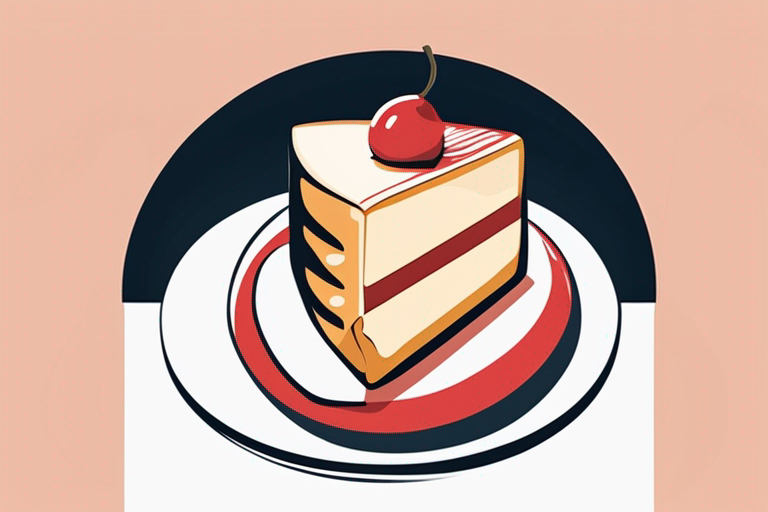
How Long Can You Eat Cheesecake After the Expiration Date?
Get Your Free Food Safety Cheat Sheet
30 most common foods with instant answers. Print it and stick it on your fridge—completely free!
How Long Can You Eat Cheesecake After the Expiration Date?
Cheesecake is a beloved dessert enjoyed by many around the world. However, when it comes to food safety, it's essential to pay attention to expiration dates and storage practices to prevent foodborne illness. In this blog post, we will delve into the topic of how long you can eat cheesecake after the expiration date, providing you with practical tips and safety information to ensure you can enjoy your favorite treat safely.
Understanding Cheesecake Expiration Dates
When you purchase a cheesecake from a store or bakery, it typically comes with an expiration date printed on the packaging. This date indicates the last day that the product is expected to be at its peak quality. It's important to note that the expiration date is not a strict deadline, but rather a guideline for freshness.
Factors Affecting Cheesecake Shelf Life
Several factors can influence how long a cheesecake remains safe to eat after the expiration date:
-
Ingredients: The quality of ingredients used in the cheesecake can impact its shelf life. Fresh, high-quality ingredients are less likely to spoil quickly.
-
Storage: Proper storage is crucial for extending the shelf life of cheesecake. Storing it in the refrigerator at the right temperature can help prevent bacterial growth.
-
Packaging: The way the cheesecake is packaged, sealed, and stored can affect how long it stays fresh. Air-tight packaging can help maintain its quality.
How Long Can You Eat Cheesecake After the Expiration Date?
While the expiration date serves as a guideline, cheesecake can often be consumed beyond that date if stored properly. Here are some practical tips to help you determine if your cheesecake is still safe to eat:
Visual Inspection
Inspect the cheesecake visually before consuming it. Look for any signs of mold, unusual discoloration, or a sour smell. If the cheesecake appears to be off, it's best to discard it.
Smell Test
Give the cheesecake a sniff. If it smells sour, rancid, or off-putting, it's a clear indication that it has spoiled and should not be eaten.
Taste Test
If the cheesecake passes the visual and smell tests, you can try a small taste to check for any unusual flavors or textures. If it tastes off or has a strange consistency, it's best to err on the side of caution and discard it.
Storage Conditions
Proper storage is key to extending the shelf life of cheesecake. Here are some tips for storing cheesecake:
-
Refrigeration: Store cheesecake in the refrigerator at temperatures below 40°F (4°C) to slow down bacterial growth.
-
Covering: Keep the cheesecake covered with plastic wrap or aluminum foil to prevent it from drying out and absorbing odors from other foods in the fridge.
-
Freezing: Cheesecake can be frozen for longer storage. Wrap it tightly in plastic wrap and aluminum foil before placing it in the freezer.
Use-By Date vs. Expiration Date
It's important to distinguish between the "use-by" date and the expiration date. The use-by date indicates the last day the product is at its peak quality, while the expiration date signifies the last day the product is safe to consume. Cheesecake can often be consumed safely after the use-by date if it has been stored correctly.
Real-Life Scenarios
Many people find themselves questioning whether to toss out cheesecake that’s past its expiration date. For instance, imagine it’s a Sunday afternoon, and you've just had a lovely family gathering. Someone brought a delicious cheesecake, and there’s a half-eaten slice left in the fridge. As Monday rolls around, you eye that cheesecake, unsure if it's still good to eat. You remember the laughter and joy it brought to your family, but now you're faced with a decision: to indulge or to discard?
Another relatable scenario involves a late-night craving. You’ve finished dinner and suddenly remember that you had a slice of cheesecake stashed in the back of your fridge. It’s past the expiration date, and you’re left wondering if it’s safe to enjoy that delectable slice. You might think about how delicious it was when fresh and consider whether it’s worth the risk.
In both cases, relying on your senses can help you make a more informed decision.
Scientific Context
Understanding food safety and preservation methods can provide greater insight into the longevity of cheesecake. Cheesecake is primarily made from cream cheese, sugar, eggs, and a crust. Cream cheese, being a dairy product, has a relatively short shelf life compared to other ingredients. The pH level is another critical factor; cheesecakes often have a lower pH, which can inhibit the growth of some bacteria.
One of the most effective ways to preserve cheesecake is through refrigeration. Keeping cheesecake at a controlled temperature slows down the proliferation of harmful bacteria like Listeria and Salmonella, which can be significant concerns for perishable items. Additionally, freezing can extend its shelf life significantly.
It’s essential to remember that foodborne illnesses can have serious health implications. While cheesecake may seem harmless, it can harbor bacteria if not stored correctly. According to the USDA, dairy products should generally be consumed within a week of their expiration date, provided they have been stored properly.
Practical Tips for Cheesecake Lovers
-
Label Your Cheesecake: When you buy cheesecake or make it yourself, label it with the date of purchase or preparation. This will help you keep track of its freshness.
-
Use an Airtight Container: If storing leftover cheesecake, consider transferring it to an airtight container. This will help maintain its moisture and flavor while protecting it from other odors.
-
Check Your Fridge’s Temperature: Regularly check your refrigerator’s temperature. Keeping it at 37°F (3°C) is ideal for most perishable items.
-
Portion Control: If you're unsure about how long a whole cheesecake will last, consider slicing it into portions before freezing. This way, you can defrost and enjoy just what you need.
Common Mistakes
Many people assume that if a cheesecake doesn't look or smell off, it’s safe to eat, which can lead to potential health risks. Here are some common mistakes:
-
Ignoring the Expiration Date: While it’s important to assess the quality, some people overlook the expiration date entirely, leading to potential foodborne illnesses.
-
Thawing at Room Temperature: If you’ve frozen cheesecake, avoid thawing it at room temperature. Instead, place it in the refrigerator overnight to ensure even thawing and prevent bacterial growth.
-
Storing in the Wrong Place: Some individuals store cheesecake on the fridge door, where the temperature fluctuates more due to opening and closing. It’s best to store cheesecake in the main body of the fridge, where it stays cooler.
Expert Insights
Food safety experts recommend always practicing the "first in, first out" (FIFO) method when dealing with any perishable items. This means consuming items that have been in your fridge the longest first. It's also a good practice to regularly check for any expired items, not just cheesecake.
If you're ever in doubt, consult a food safety expert or local health department resources to gain more insight into food storage and safety practices specific to your area.
Safety Warnings
While cheesecake can be delicious and tempting even after the expiration date, always prioritize your health. If you suspect that your cheesecake has been improperly stored or if it shows any signs of spoilage, it’s best to err on the side of caution and dispose of it.
Foodborne illnesses are serious, and symptoms can range from mild discomfort to severe reactions. Symptoms can include nausea, vomiting, diarrhea, and abdominal pain. Remember that vulnerable populations, such as pregnant women, young children, and the elderly, are particularly at risk for serious illness from spoiled or improperly stored dairy products.
Conclusion
In conclusion, while it's crucial to pay attention to expiration dates and practice proper food safety measures, cheesecake can often be consumed safely after the expiration date if stored correctly. By following the tips outlined in this blog post, you can enjoy your favorite dessert while minimizing the risk of foodborne illness. Remember to trust your senses and use your best judgment when determining the freshness of cheesecake. Stay safe and enjoy your delicious treats!

Authoritative Food Safety References
These agencies and university labs inform every tip and health precaution we publish.
USDA FoodKeeper – Cold Storage Guidelines
Official refrigerator, freezer, and pantry timelines maintained by the U.S. Department of Agriculture.
Visit USDA FoodKeeperFDA Produce Safety Rule & Grower Guidance
Field-to-fridge handling practices that prevent contamination of fruits, vegetables, and leafy greens.
Visit FDA Produce SafetyCDC Foodborne Illness Prevention Hub
Surveillance-backed guidance on pathogens, symptoms, and steps to reduce foodborne illness risk.
Visit CDC Food SafetyUC Davis Postharvest Technology Center
University research detailing optimal storage atmospheres for produce after harvest.
Visit UC Davis PostharvestPenn State Extension – Home Food Preservation & Safety
Peer-reviewed extension bulletins on safe canning, chilling, and reheating practices.
Visit Penn State ExtensionQ: How long does cheesecake last in the fridge?
Q: Can you freeze cheesecake to extend its shelf life?
Q: How can you tell if cheesecake has gone bad?
Q: Can cheesecake make you sick if it is expired?
Get Your Free Food Safety Cheat Sheet
30 most common foods with instant answers. Print it and stick it on your fridge—completely free! Want more? Upgrade to the complete guide with 70+ foods.
Scan your food directly and get instant safety info using our AI-powered camera feature.